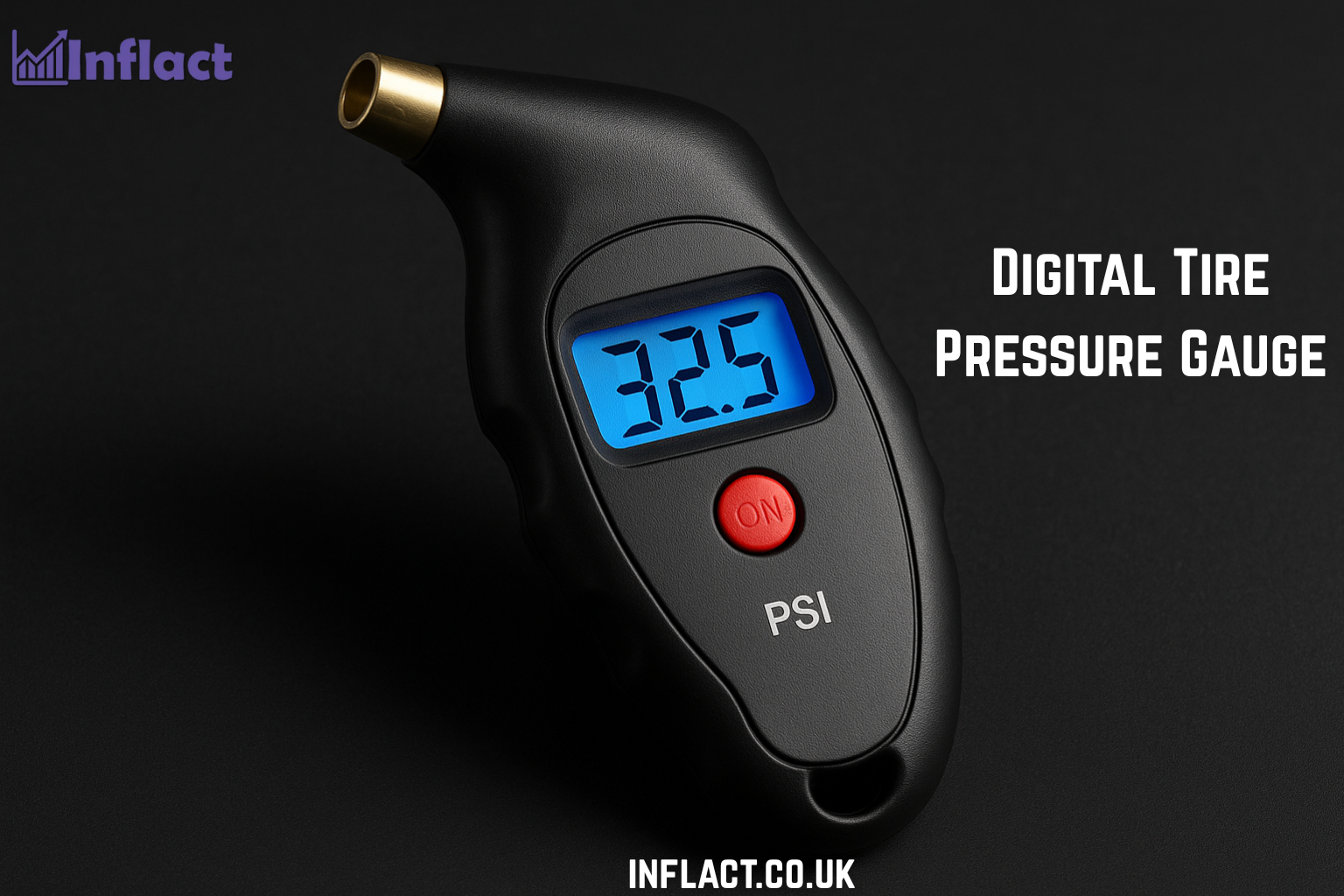Introduction
In the world of automotive safety and maintenance, tire pressure plays a vital role. Incorrect tire pressure can lead to poor fuel economy, reduced traction, uneven tire wear, and even dangerous blowouts. To address this, one of the most practical and efficient tools drivers can use today is the digital tire pressure gauge.
A digital tire pressure gauge is a compact, electronic device that allows you to accurately measure your tire’s air pressure within seconds. It provides easy-to-read digital displays, high precision, and often includes modern features like unit conversion and automatic shut-off. In this article, we’ll explore everything you need to know about digital tire pressure gauges — from their benefits and types to how to use one correctly.
Why Tire Pressure Matters for Every Driver
Before diving into how digital tire pressure gauges work, it’s important to understand why tire pressure matters so much:
Safety
Underinflated or overinflated tires can cause:
- Poor braking performance
- Increased risk of tire blowouts
- Reduced control, especially in wet or icy conditions
Fuel Efficiency
Proper tire inflation reduces rolling resistance, helping your car consume less fuel.
Tire Longevity
Balanced tire pressure prevents uneven wear, saving you money on replacements.
Performance
Handling, turning, and suspension performance are optimized when tire pressure is within recommended ranges.
Keeping tire pressure in check is essential — and digital gauges make this task faster and more accurate.
Also Read: 2025 Mercedes-Benz G-Class for Sale: Everything You Need to Know Before You Buy
What Is a Digital Tire Pressure Gauge?
A digital tire pressure gauge is an electronic device used to check the air pressure inside your tires. Unlike analog or stick gauges, digital models display pressure readings on an LCD or LED screen, often within 0.5–1 PSI accuracy.
Features Typically Include:
- Backlit display for low-light use
- Battery-powered operation
- Auto shut-off function
- Multi-unit display (PSI, BAR, kPa)
- Durable, compact build
Some advanced versions also include flashlights, inflators, or Bluetooth connectivity for syncing with mobile apps.
Advantages of Using a Digital Tire Pressure Gauge
Precision and Accuracy
Digital gauges usually provide highly accurate readings, crucial for modern vehicles with specific tire pressure requirements.
Easy to Read
Clear digital displays eliminate the guesswork of interpreting needles or markings found in analog gauges.
User-Friendly
Most gauges require just one button to operate and offer readings in multiple units, making them versatile and beginner-friendly.
Portability
They are lightweight and small enough to store in your glove box or trunk, making them ideal for road trips or emergency use.
Ideal for Multiple Vehicles
Whether you drive a car, motorcycle, RV, or bicycle — digital gauges work across all tire types with standard valve stems.
Step-by-Step Guide: How to Use a Digital Tire Pressure Gauge
Step 1: Know Your Recommended Tire Pressure
Check your vehicle’s user manual or the sticker inside the driver’s door for the ideal PSI (pounds per square inch) range.
Step 2: Remove the Valve Cap
Locate the valve stem on your tire and unscrew the cap. Keep it somewhere safe.
Step 3: Turn on the Gauge
Press the power button. Most digital gauges will light up and display “0.0”.
Step 4: Press the Nozzle to the Valve Stem
Place the nozzle firmly onto the valve and press down evenly. You may hear a slight hiss — that’s normal.
Step 5: Read the Pressure
After 1–2 seconds, the screen will show the pressure reading. Take note of it.
Step 6: Adjust Air if Necessary
- If the pressure is too low, inflate the tire using an air compressor.
- If it’s too high, gently release air and recheck.
Step 7: Replace Valve Cap and Turn Off
Once done, screw the cap back on and turn off the device. Many models turn off automatically after a few seconds.
Tip: Always check tire pressure when the tires are “cold” — ideally after the car has been parked for 3+ hours.
Choosing the Right Digital Tire Pressure Gauge
When shopping for the best digital tire pressure gauge, consider these key factors:
| Feature | Why It Matters |
|---|---|
| Accuracy (±1 PSI) | Ensures reliable readings for safety |
| Display Readability | Large, backlit screen for night or low light |
| Unit Options | PSI, BAR, kPa to match regional preferences |
| Build Quality | Water-resistant, rugged materials |
| Battery Life | Long-lasting, replaceable, or rechargeable |
| Extras | Flashlight, emergency tool, app integration |
Top brands include JACO, AstroAI, Michelin, Slime, and TACKLIFE.
Also Read: 2 and 5/16 Ball Hitch: A Complete Guide for Safe and Secure Heavy-Duty Towing
Conclusion
The digital tire pressure gauge is a simple yet powerful tool that every driver should have. With its precision, ease of use, and smart features, it makes tire maintenance faster and more efficient than ever. Keeping your tires at the correct pressure doesn’t just improve safety — it saves money, enhances performance, and prolongs the life of your vehicle.
Incorporate regular pressure checks into your routine, especially before long drives or seasonal changes. Investing in a reliable digital tire pressure gauge is a small decision with big benefits.
Frequently Asked Questions (FAQs)
1. How often should I check my tire pressure?
At least once a month and before any long trip. Also check during major temperature shifts, as tire pressure changes with weather.
2. Are digital tire pressure gauges better than analog?
Yes. Digital models are typically more accurate, easier to read, and often offer extra features like unit conversion and auto shut-off.
3. Can I use one gauge for different vehicles?
Absolutely. Most digital gauges support cars, motorcycles, bikes, trucks, and RVs as long as they have standard Schrader valve stems.
4. What pressure should my tires be set to?
Check your vehicle’s owner manual or look for a sticker on the driver’s side door frame — usually between 30–35 PSI for cars.
5. Do digital gauges need calibration or batteries?
Most come factory-calibrated and are battery-powered. Some have replaceable batteries, while others are rechargeable via USB.




